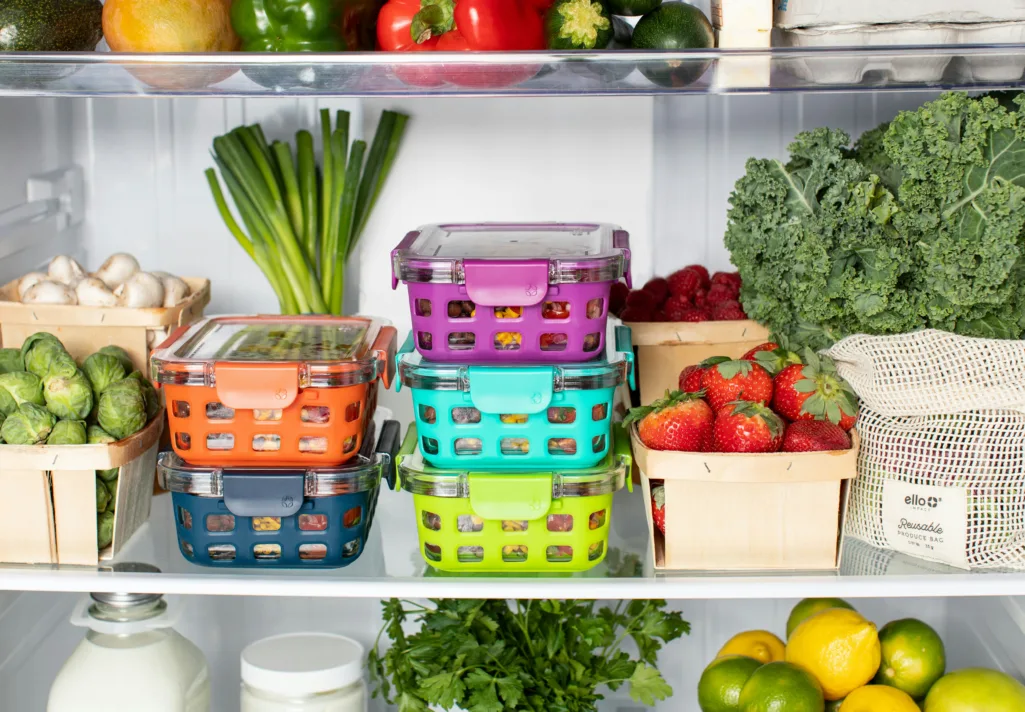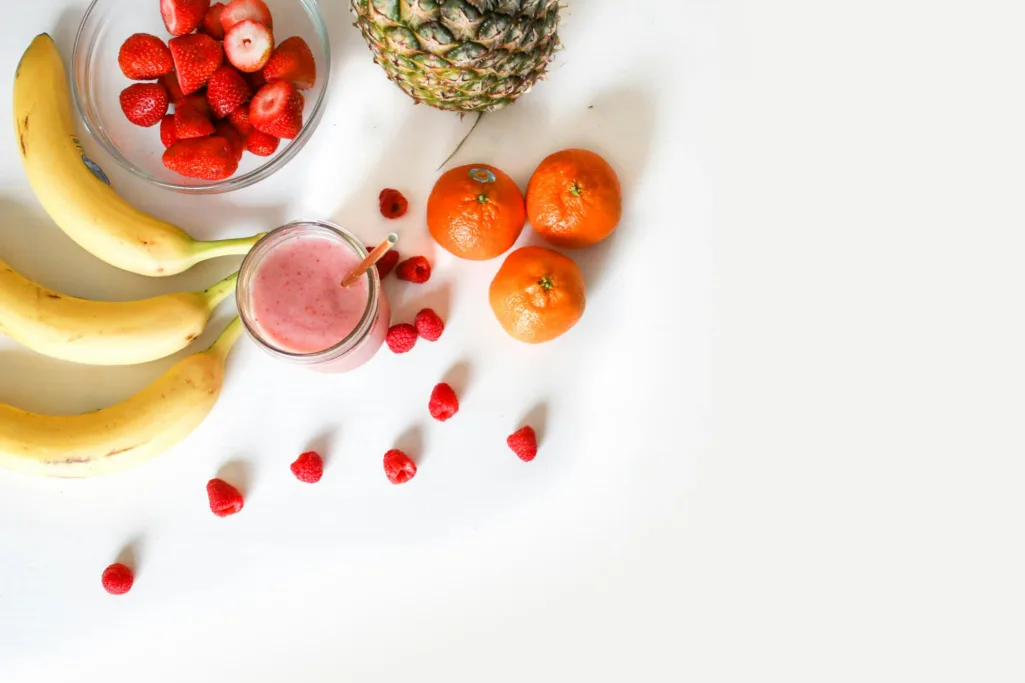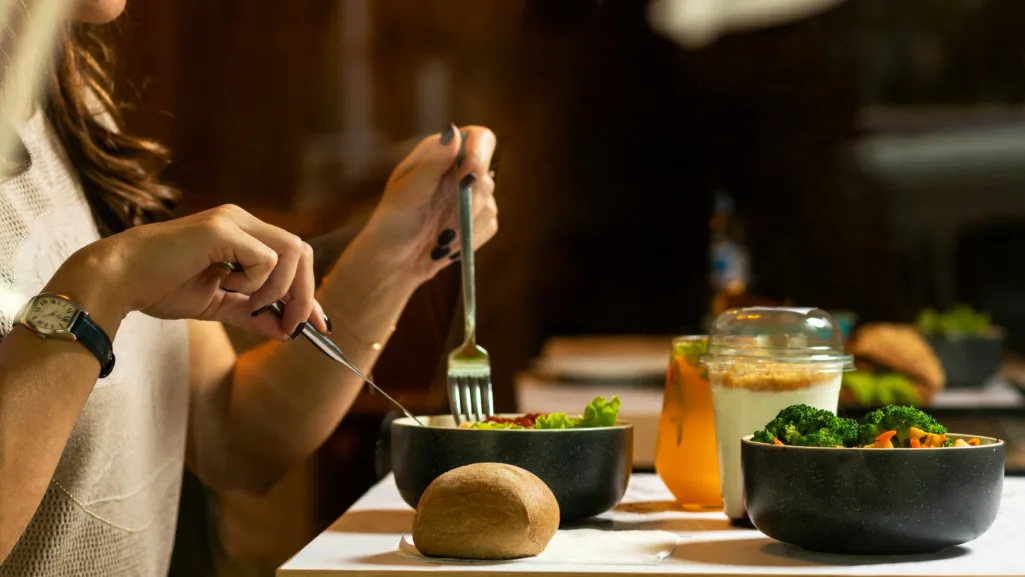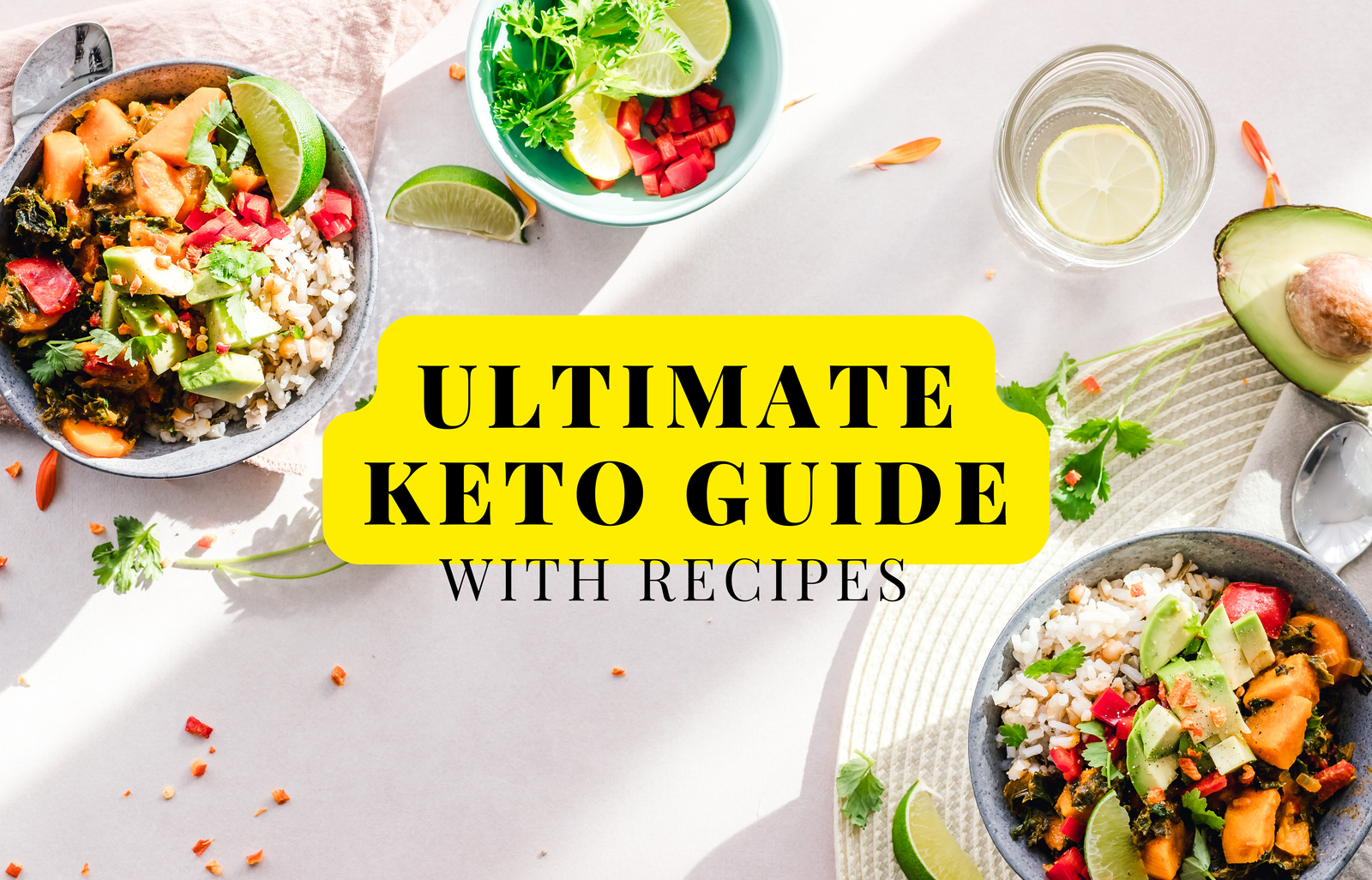Yoga & Pilates, Nutrition & Healthy Eating
Diet Ideas to Enhance Your Yoga and Pilates Journey
Did you know that the right diet can greatly enhance your yoga and Pilates journey? Nutrition plays a crucial role in supporting these holistic practices, allowing you to achieve optimal physical and mental well-being. By nourishing your body with the right foods, you can enhance your performance, improve flexibility, and deepen your mind-body connection. In this article, we will explore seven diet ideas that will take your yoga and Pilates practice to the next level.

Key Takeaways:
- Prioritize whole foods to fuel your body with essential nutrients.
- Stay hydrated to maintain peak performance during your yoga and Pilates sessions.
- Embrace balanced meals that include carbohydrates, proteins, and healthy fats.
- Practice mindful eating to enhance your connection with your body.
- Time your meals properly to ensure comfort and energy during your practice.
Table of Contents
Prioritize Whole Foods

When it comes to maintaining a healthy diet for your yoga and Pilates journey, one key aspect to focus on is the prioritization of whole foods. Whole foods are unprocessed or minimally processed ingredients that provide the necessary nutrients to fuel your body during these physically demanding practices.
So, what exactly are whole foods? Whole foods include fresh vegetables and fruits, lean proteins, whole grains, and healthy fats. These nutrient-dense options lay the foundation for a well-rounded and balanced diet. Incorporating them into your meals and snacks can help you achieve optimal physical and mental performance during your yoga and Pilates sessions.
Vegetables and fruits: The inclusion of colorful vegetables and fruits in your diet ensures a variety of vitamins, minerals, antioxidants, and fiber. These components contribute to overall well-being, support immune function and aid in digestion.
Lean proteins: Incorporating lean proteins such as poultry, fish, legumes, and tofu provides the necessary amino acids for muscle repair and growth. This helps to enhance strength, improve recovery, and build lean muscle mass.
Whole grains: Whole grains like quinoa, brown rice, and whole wheat bread are excellent sources of complex carbohydrates that provide sustained energy. They are also packed with fiber, which aids in digestion and promotes feelings of fullness.
Healthy fats: Adding sources of healthy fats like avocados, nuts, and olive oil to your meals not only adds flavor but also supports brain health, reduces inflammation, and helps to regulate hormone production.
By prioritizing whole foods, you can ensure that your body receives the necessary macronutrients, vitamins, and minerals required to sustain energy levels and promote overall health and well-being on your yoga and Pilates journey.
Stay Hydrated
Staying hydrated is crucial for maintaining peak physical performance during yoga and Pilates sessions. Dehydration can lead to reduced flexibility, muscle cramps, and lack of focus. Water should be your primary beverage throughout the day to stay refreshed and hydrated during your practice.
Hydration is key to optimize your body’s functions and enhance your overall performance. When practicing yoga or Pilates, your body temperature rises, and you sweat, increasing the risk of dehydration. By replenishing lost fluids, you can prevent fatigue, maintain proper muscle function, and improve your concentration.
Water is the best choice for hydration as it is calorie-free and readily available. It helps transport essential nutrients to your muscles, supports joint lubrication, and aids in detoxification. Make it a habit to drink water before, during, and after your yoga or Pilates sessions to keep your body properly hydrated and performing at its peak.

| Benefits of Staying Hydrated during Yoga and Pilates |
|---|
| 1. Enhanced flexibility and range of motion |
| 2. Improved muscle strength and endurance |
| 3. Increased mental clarity and focus |
| 4. Prevention of muscle cramps and fatigue |
| 5. Improved joint lubrication |
Embrace Balanced Meals
A balanced meal is essential for maximizing your yoga and Pilates practice. By incorporating the right combination of carbohydrates, proteins, and fats into your meals, you can fuel your body with the nutrients it needs to perform at its best.
Carbohydrates: Carbohydrates are the primary source of energy for your body. They provide the fuel needed to power through your yoga and Pilates sessions. Opt for complex carbohydrates like whole grains, fruits, and vegetables, which release energy slowly and sustain you throughout your practice.
Proteins: Proteins are crucial for muscle repair and growth. Including lean sources of protein in your meals, such as poultry, fish, tofu, or legumes, can help support the development of lean muscle mass and aid in post-workout recovery.
Fats: Healthy fats are an essential part of a balanced diet. They not only provide energy but also help your body absorb vitamins and minerals. Incorporate sources of unsaturated fats, such as avocados, nuts, and olive oil, into your meals to sustain you during longer yoga and Pilates sessions.
To help you create balanced meals, here’s an example plate:
| Meal Component | Example Foods |
|---|---|
| Carbohydrates | Quinoa, sweet potatoes, whole wheat bread |
| Proteins | Grilled chicken breast, salmon, lentils |
| Fats | Avocado, almonds, olive oil |
This combination of carbohydrates, proteins, and fats ensures that you have a well-rounded meal that provides sustained energy, muscle support, and overall nourishment for your yoga and Pilates practice.
Remember, the key to enhancing your journey is to embrace balanced meals that nourish your body and support your physical and mental well-being.
Mindful Eating

Just as mindfulness is important in yoga and Pilates, it is crucial at the dining table. Practice mindful eating by savoring each bite, paying attention to flavors, textures, and how your body responds to different foods. This practice enhances your connection with your body’s cues, helping you make better food choices.
When you engage in mindful eating, you are fully present and aware of the food you consume. Instead of rushing through meals or eating mindlessly, you take the time to appreciate and enjoy each bite. By slowing down and savoring your food, you can truly experience the flavors and textures it offers.
Incorporate these mindful eating techniques into your daily meals:
- Paying attention to your senses: Notice the flavors, colors, and aromas of the food on your plate.
- Eating slowly: Take small bites and chew thoroughly, allowing yourself to fully experience each mouthful.
- Listen to your body: Pay attention to your body’s cues of hunger and fullness. Stop eating when you feel satisfied, rather than when your plate is empty.
- Practice gratitude: Take a moment before each meal to express gratitude for the nourishment provided by the food.
Mindful eating can have numerous benefits for your overall well-being. By being present during meals, you can reduce overeating, make healthier food choices, and improve digestion. It also allows you to connect with your body’s needs, helping you honor your hunger and fullness cues.
Mindful Eating Techniques
| Technique | Description |
|---|---|
| Paying attention to your senses | Notice the flavors, colors, and aromas of the food on your plate. |
| Eating slowly | Take small bites and chew thoroughly, allowing yourself to fully experience each mouthful. |
| Listen to your body | Pay attention to your body’s cues of hunger and fullness. Stop eating when you feel satisfied, rather than when your plate is empty. |
| Practice gratitude | Take a moment before each meal to express gratitude for the nourishment provided by the food. |
Time Your Meals
Timing your meals is crucial for ensuring your comfort and energy levels during yoga and Pilates sessions. Nobody wants to suffer from discomfort or experience low energy levels while trying to focus on their practice. By paying attention to when and what you eat, you can optimize your workout experience and get the most out of your sessions.
Eating Before a Session
It’s essential to find the right balance when it comes to eating before your yoga or Pilates session. Eating too much right before can leave you feeling uncomfortable and sluggish. On the other hand, exercising on an empty stomach can result in low energy levels and potential dizziness. To strike the perfect balance, try to have a balanced meal about 1-2 hours before your practice. This will provide your body with the necessary fuel for the physical demands of the workout.
Choosing the Right Meal
When planning your pre-workout meal, aim for a combination of carbohydrates, proteins, and healthy fats. Carbohydrates provide the immediate energy you need, proteins support muscle repair and recovery, and healthy fats can help sustain you during longer sessions. Here’s a sample meal idea:
| Meal | Ingredients |
|---|---|
| Pre-Workout Power Bowl | 1/2 cup of cooked quinoa A handful of mixed berries 1 tablespoon of almond butter A sprinkle of chia seeds |
Snacking Closer to the Session
If you feel like you need an extra boost of energy closer to your yoga or Pilates session, consider having a light snack. Opt for a small portion of easily digestible food that won’t weigh you down. Here are some snack ideas:
- A piece of fruit, like a banana or an apple
- A handful of almonds or other nuts
- A Greek yogurt with a drizzle of honey
Listen to your body and experiment to find what works best for you. Everyone’s digestive system is different, so it’s important to pay attention to how you feel and make adjustments accordingly.
Remember, timing your meals and snacks appropriately can make a significant difference in your overall workout experience. By providing your body with the right fuel at the right time, you’ll be able to perform at your best and avoid any discomfort or energy slumps. Stay mindful of what you eat and how it affects your body, and enjoy the benefits of nourishing yourself adequately before each yoga or Pilates session.
Consider Post-Practice Nutrition
After your yoga or Pilates class, it is crucial to prioritize post-practice nutrition to support muscle recovery, replenish glycogen stores, and maintain optimal energy levels. By refueling your body with a combination of protein and carbohydrates, you give your muscles the nutrients they need to repair and grow while replenishing the energy stores depleted during your session.
There are various delicious and nutritious options that you can include in your post-practice meal. Consider grilled chicken with roasted vegetables, which provides a lean source of protein and fiber-rich vegetables. Another option is avocado spread on toast, offering healthy fats, vitamins, and minerals to support your body’s overall function. If you prefer seafood, a serving of salmon with sweet potatoes delivers omega-3 fatty acids, antioxidants, and complex carbohydrates for sustained energy.
By incorporating these healthy eating habits into your yoga and Pilates journey, you are not only enhancing your physical outcomes but also aligning your dietary choices with the holistic principles of these practices. Remember, post-practice nutrition plays a significant role in optimizing your recovery and ensuring you have the energy to continue benefiting from your yoga and Pilates sessions. Nourish your body, achieve harmony, and reap the rewards both on and off the mat!
FAQ
Why is it important to prioritize whole foods in a yoga and Pilates diet?
Whole foods are nutrient-dense and provide the energy and nourishment needed for these physically demanding practices.
How does staying hydrated affects yoga and Pilates sessions?
Staying hydrated is crucial for maintaining peak physical performance during yoga and Pilates sessions. Dehydration can lead to reduced flexibility, muscle cramps, and lack of focus.
What should a balanced meal for yoga and Pilates practitioners include?
A balanced meal should include a combination of carbohydrates, proteins, and fats. Carbohydrates provide quick energy, proteins support muscle repair and growth, and healthy fats sustain you during longer sessions.
How can mindful eating contribute to a yoga and Pilates practice?
Mindful eating enhances your connection with your body’s cues, helping you make better food choices and aligning your dietary habits with the holistic principles of yoga and Pilates.
Why is timing your meals important for yoga and Pilates?
Timing your meals ensures comfort and energy levels during your yoga and Pilates sessions. Eating too much right before a session can lead to discomfort while exercising on an empty stomach can result in low energy levels.
What should you eat for post-practice nutrition?
It is important to refuel your body with a combination of protein and carbohydrates after your yoga or Pilates class. This aids in muscle recovery, replenishes glycogen stores, and supports overall energy levels.



